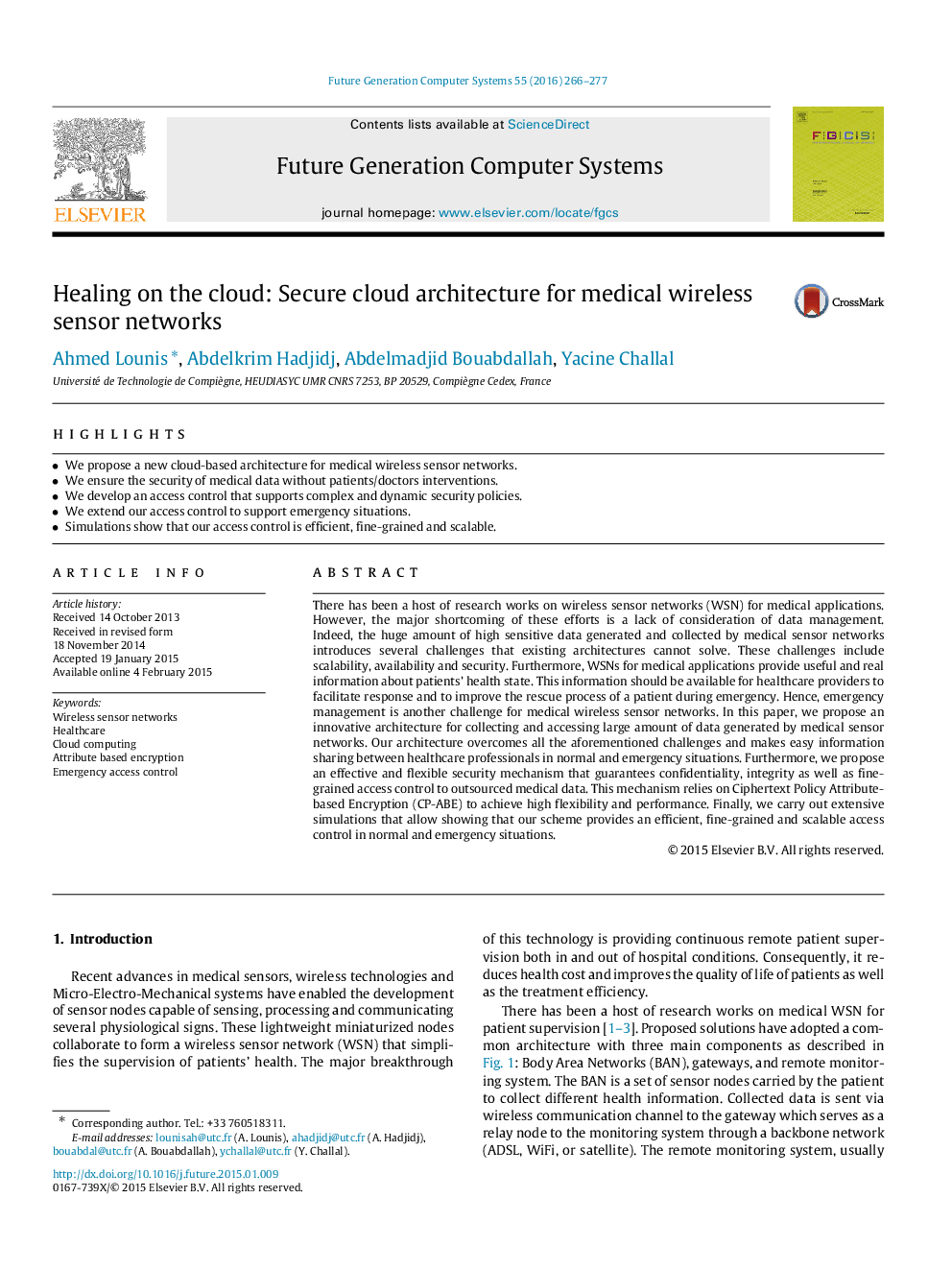| کد مقاله | کد نشریه | سال انتشار | مقاله انگلیسی | نسخه تمام متن |
|---|---|---|---|---|
| 425576 | 685780 | 2016 | 12 صفحه PDF | دانلود رایگان |
کلید واژه ها
1.مقدمه
شکل 1: معماری سیستم نظارتی راه دور
2- کارهای مرتبط
3- معماری ما
شکل 2: معماری پیشنهادی
4- پیش زمینه: رمزگذاری مبتنی بر مشخصه
شکل 3: یک درخت دسترسی T
5- پیاده سازی خدمات امنیتی
5.1 - مدل امنیتی
5.2- خدمات امنیتی
شکل 4 : نشانه گذاری های مورد استفاده در راه حل
5.3- پیاده سازی امنیت
5.3.1- راه اندازی سیستم
5.3.2- افزودن یک کاربر جدید
شکل 5 : نمونه ای از نظارت بیمار
5.3.3 مدیریت داده های بهداشتی
5.3.4 مدیریت اطلاعات پزشکی
5.3.5 حذف اطلاعات سلامت
5.3.6 لغو
6- مدیریت اضطراری
شکل 6: نمونه ای از مداخله اورژانسی
6.1- سناریوی اضطراری و الزامات
شکل 7: نمونه ای از ساختار دسترسی برای دسترسی break-glass
شکل 8: کلید اورزانسی
6.2- مدیریت اضطراری: پیاده سازی
7- تجزیه و تحلیل امنیتی و عملکردی
7.1- تحزیه و تحلیل امنیتی
شکل 9: ارزیابی رمزنگاری
شکل 10: ارزیابی رمزگشایی
شکل 11: ارزیابی اعطا
شکل 12 : ارزیابی عملکردی خواندن، نوشتن و ایجاد WRT
شکل 13 : ارزیابی عملکردی خواندن، نوشتن و ایجاد w.r.t.
شکل 14: ارزیابی عملکردی با تغییرات سیاست دسترسی
7.2 تجزیه و تحلیل عملکرد
7.2.1- تجزیه و تحلیل عملیات رمزگذاری
شکل 15: ارزیابی عملکرد با موقعیت های اورژانسی
شکل 16: مقایسه جدولی مدل های کنترل دسترسی رمزنگاری
شکل 17: میانگین زمان انتظار مطابق با نرخ ورود (λ)
شکل 18: ارزیابی عملکردی راه حل ما بدون/ با ابر
8- نتیجه گیری
• We propose a new cloud-based architecture for medical wireless sensor networks.
• We ensure the security of medical data without patients/doctors interventions.
• We develop an access control that supports complex and dynamic security policies.
• We extend our access control to support emergency situations.
• Simulations show that our access control is efficient, fine-grained and scalable.
There has been a host of research works on wireless sensor networks (WSN) for medical applications. However, the major shortcoming of these efforts is a lack of consideration of data management. Indeed, the huge amount of high sensitive data generated and collected by medical sensor networks introduces several challenges that existing architectures cannot solve. These challenges include scalability, availability and security. Furthermore, WSNs for medical applications provide useful and real information about patients’ health state. This information should be available for healthcare providers to facilitate response and to improve the rescue process of a patient during emergency. Hence, emergency management is another challenge for medical wireless sensor networks. In this paper, we propose an innovative architecture for collecting and accessing large amount of data generated by medical sensor networks. Our architecture overcomes all the aforementioned challenges and makes easy information sharing between healthcare professionals in normal and emergency situations. Furthermore, we propose an effective and flexible security mechanism that guarantees confidentiality, integrity as well as fine-grained access control to outsourced medical data. This mechanism relies on Ciphertext Policy Attribute-based Encryption (CP-ABE) to achieve high flexibility and performance. Finally, we carry out extensive simulations that allow showing that our scheme provides an efficient, fine-grained and scalable access control in normal and emergency situations.
Journal: Future Generation Computer Systems - Volume 55, February 2016, Pages 266–277
